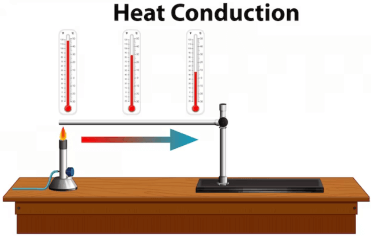Question
a.
decrease
b.
increase
c.
remain unchanged
d.
depend upon the characteristics of liquid
Posted under Mechanical Engineering
Interact with the Community - Share Your Thoughts
Uncertain About the Answer? Seek Clarification Here.
Understand the Explanation? Include it Here.
Q. With an increase in size of tube, the rise or depression of liquid in the tube due to surface tension will
Similar Questions
Explore Relevant Multiple Choice Questions (MCQs)
Q. In a short cylindrical external mouthpiece, the vena contracta occurs at a distance __________ the diameter of the orifice from the outlet of orifice.
View solution
Q. Viscous force is the __________ of shear stress due to viscosity and cross-sectionar area of flow.
View solution
Q. The density of air is same at different heights.
View solution
Q. The total pressure on a horizontally immersed surface is (where w = Specific weight of the liquid, A = Area of the immersed surface, and x = Depth of the centre of gravity of the immersed surface from the liquid surface)
View solution
Q. A body floating in a liquid is said to be in a stable equilibrium, if its metacentre coincides with its centre of gravity.
View solution
Q. A flow whose streamline is represented by a curve, is called
View solution
Q. When the Mach number is less than unity, the flow is called
View solution
Q. When the end contractions of the weir are suppressed, then number of end contractions (n) are taken as zero
View solution
Q. A flow is called hyper-sonic, if the Mach number is
View solution
Q. The power absorbed (in watts) in overcoming the viscous resistance of a footstep bearing is
View solution
Q. The intensity of pressure at any point, in a liquid, is
View solution
Q. If the depth of water in an open channel is greater than the critical depth, the flow is called
View solution
Q. A submerged body is said to be in a stable equilibrium, if its centre of gravity __________ the centre of buoyancy.
View solution
Q. The critical depth for a channel is given by (where q = Unit discharge (discharge per unit width) through the channel)
View solution
Q. The liquid used in manometers should have
View solution
Q. The hydraulic mean depth or the hydraulic radius is the ratio of
View solution
Q. The imaginary line drawn in the fluid in such a way that the tangent to any point gives the direction of motion at that point, is known as
View solution
Q. A hemispherical tank of radius (R) has an orifice of cross-sectional area (a) at its bottom and is full of liquid. The time required to empty the tank completely is
View solution
Q. Stoke is the unit of
View solution
Q. One poise is equal to
View solution
Recommended Subjects
Are you eager to expand your knowledge beyond Mechanical Engineering? We've handpicked a range of related categories that you might find intriguing.
Click on the categories below to discover a wealth of MCQs and enrich your understanding of various subjects. Happy exploring!








